F.L.I.P.: The Marine Research Vessel Meant to Capsize
I'd be surprised if you haven't seen this marvel of engineering before. It shows up frequently in the media, being that it's a one of a kind vessel with an alarming, but cool, primary function. F.L.I.P. stands for Floating Instrument Platform, named as such because it is unpowered (requiring another vessel to tow it into position) and once situated as designed, is meant to float in place for prolonged periods.
Built in Oregon back in 1962, F.L.I.P. is still in use today after receiving a 2 million dollar modernization of all onboard equipment in 1995. Not long until it will need another renovation, with the rate computers have been improving. F.L.I.P's main mission was stationary study of underwater accoustics. Specifically how factors like the thermocline and seafloor terrain affected the reflection of sound waves.
Unsurprisingly, given the high value of this data to submariners, the construction of F.L.I.P. and funding for its subsequent research came courtesy of the US Navy's SUBROC program, which concerned itself with how to improve the launch of missiles from underwater weapons platforms like SSGNs (or potentially large diesel electric AUVs in the future)
Once towed to where it will be used, F.L.I.P. floods ballast tanks at the rear, causing it to assume its iconic vertical configuration. Because the bottom becomes heavy enough to submerge more than half of the total length of the vessel, in the vertical orientation F.L.I.P. is extremely stable, utilizing the same principles as spar type oil platforms (seen below)
Spar type platforms offer unparalleled stability in violent open ocean conditions which also makes them a promising candidate for future seastead designs, once there's enough money and interest to fund custom designed structures. As I've written in the past, a more likely near term avenue for seasteading is after market, repurposed cruise ships. The spar type platform is sufficiently robust under even the worst that the open sea can throw at you, that it's also the basis for the upcoming Sea Orbiter science vessel which I wrote about here.
Of course, such a radical change in posture raises serious questions. What happens to the crew during the transition? What about toilets, or sinks? How do they reach the controls? How do they traverse hallways? The ingenious orientation-agnostic design, only hinted at on the outside, becomes apparent once inside. Everything from chairs to consoles to sinks either has a twin configured for use when the ship is in the other position, or us adjustable for use in either.
So radical is this departure from conventional marine architecture, that before the F.L.I.P. became widely known, it was often radioed in by other vessels as a capsizing ship in need of assistance. The high upfront cost of marine research platforms makes the F.L.I.P's capability to be repositioned invaluable, and one I expect to see on large underwater labs of the coming decades. China's own upcoming manned deep sea lab is also able to surface and be towed to new locations, evading the need to build more than one.
What does the future hold for F.L.I.P? I would be shocked if there are no imitators. It is such a self evidently pragmatic design that there's little reason not to replicate it as we expand our longterm offshore scientific presence. The need for such long duration research outposts at sea will only increase as we continue to monitor the effects of oceanic warming and the resulting acidification on sea life that most of the world's population is already reliant upon for protein.
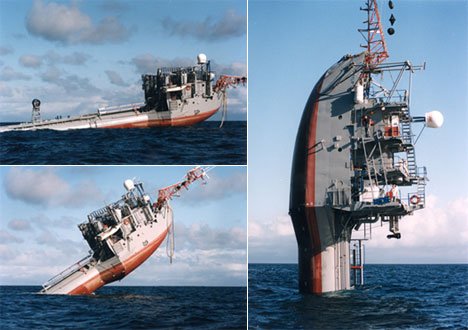
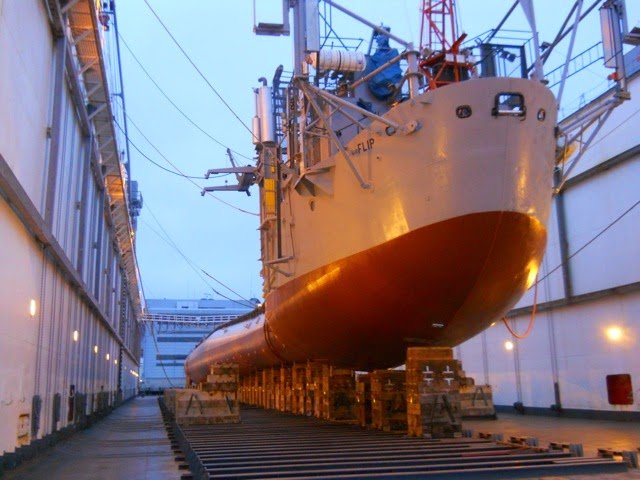
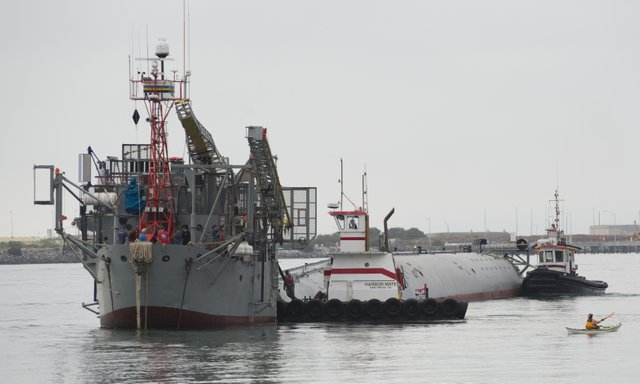
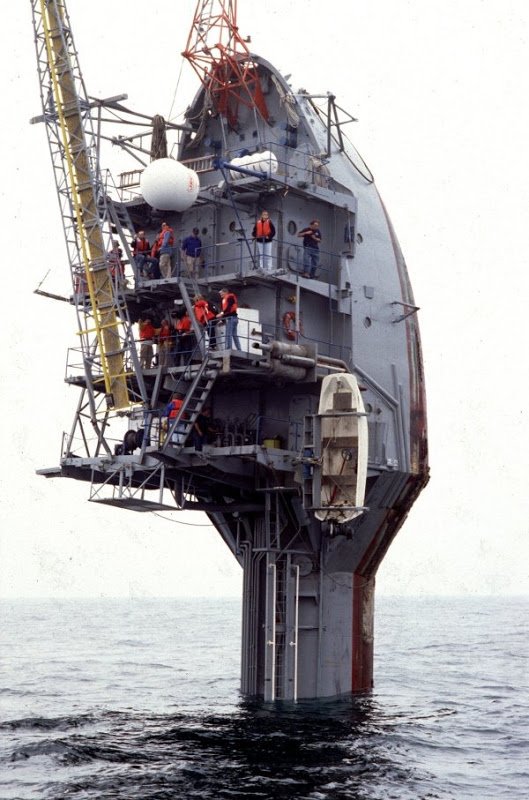
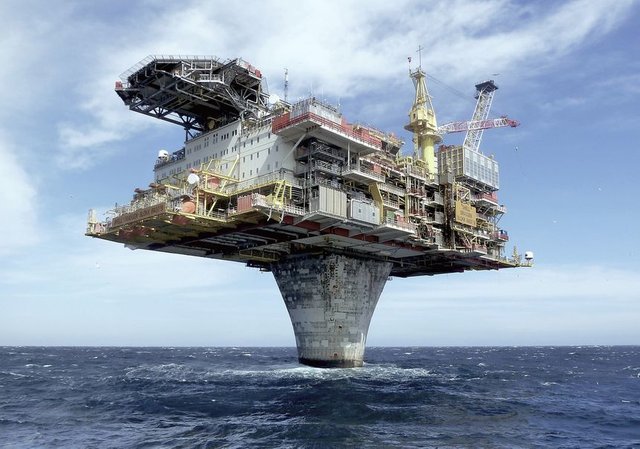
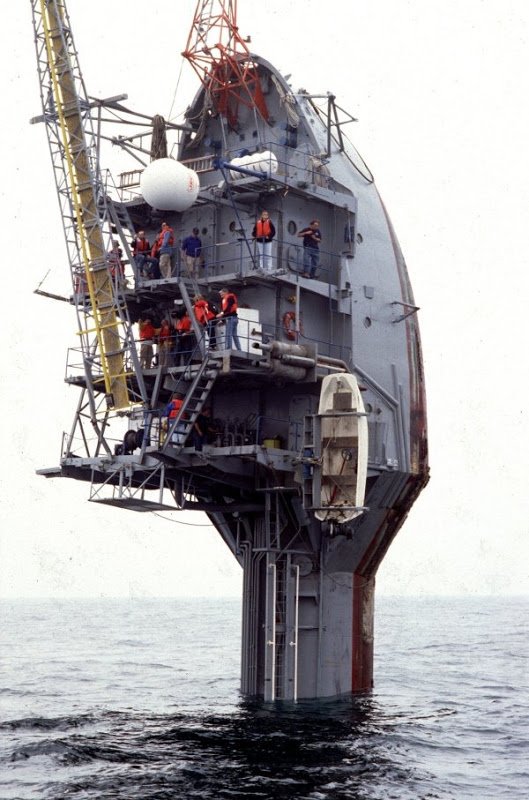
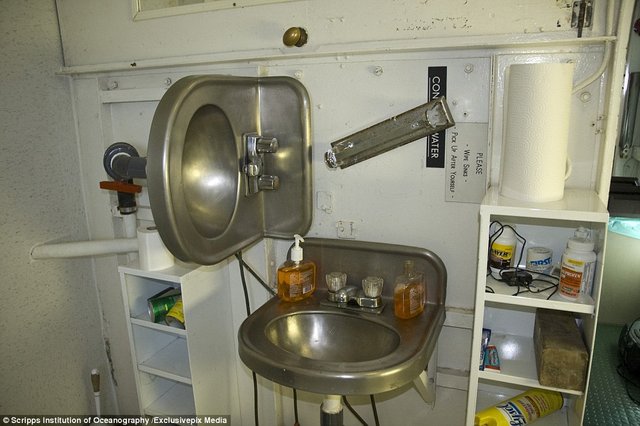
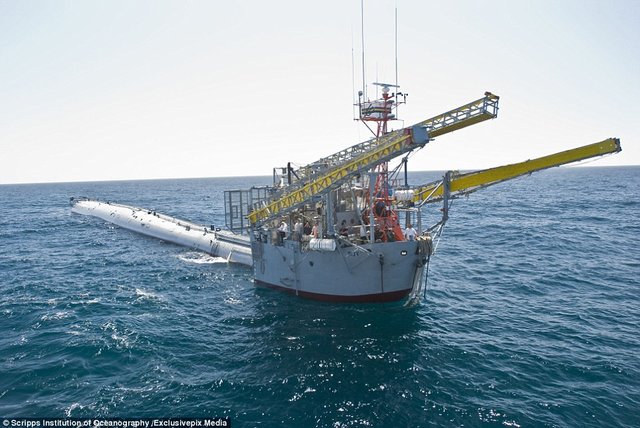
R/P FLIP is operated by Scripps Oceanographic Institution in San Diego. https://scripps.ucsd.edu/ships/flip You might also find leads to other interesting Maritime technology and businesses through San Diego's maritime technology cluster organization "The Maritime Alliance". http://www.themaritimealliance.org/
You mentioned seasteading, I recommend http://www.seasteading.org/ to anyone interested in seastesding or novel aquatic architecture.
I've written about it frequently. It's a dream of mine to live underwater, or at least out to sea.
Fascinating! I think these would make great man made islands. Tow one into international waters and you have an instant independent state. Just renounce your citizenship and you are truly free. Should be a big hit here on Steemit where there is such a strong minimal government undercurrent.
There's really no limit to how big they can be, you just need a longer and heavier ballasted portion of it underwater to compensate as the size and weight of the above water, inhabited portion increases.
Never saw that before. Pretty interesting and valuable. We want to expand into outer space but yet we know little about our oceans. Need to change that
If we spared just one of our 71 nuclear submarines and dedicated it to full time scientific use, it would make a big difference. Such a research tool could go anywhere and provide scientists long duration, unprecedented access to the undersea environment.
Interesting post.
Thank you!
thats cool... Id like to see a video of it doing its thing....
Better yet, someone could make a VR sim of it in Unity so you could experience it happening while inside. Although you can already explore a rusted, sunken wreck of it in a later level of SOMA.
great story
This post has been linked to from another place on Steem.
Learn more about linkback bot v0.4. Upvote if you want the bot to continue posting linkbacks for your posts. Flag if otherwise.
Built by @ontofractal